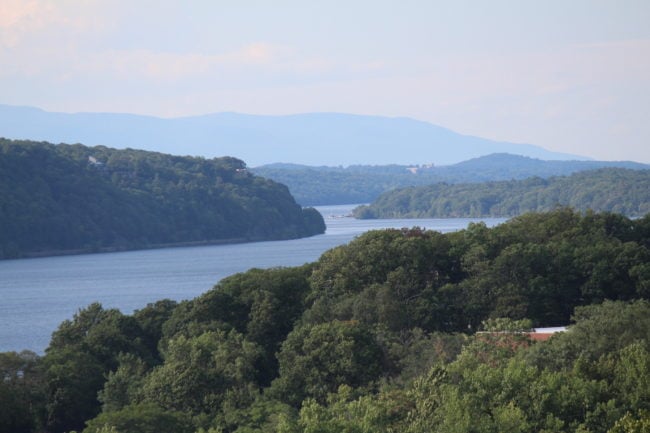Sea level rise will drive salt front up the Hudson, prompting water quality concerns
View more images on our Flickr site
The question is how soon, how severe, how frequent or consistent the salt intrusion will be. For drinking water, salinity presents several concerns. With support from Riverkeeper, communities that rely on the Hudson for drinking water are advocating for studies.

The Hudson River is an estuary for 150 miles from New York Harbor to the federal dam at Troy. It would be an estuary much farther north if not for the canal system. As a tidal estuary, saltwater from the Atlantic mixes with freshwater from the watershed. The salt front is defined by a specific level of salinity, and its location in the estuary changes throughout the year and with various weather patterns. Summer droughts tend to be the time when salt pushes farthest northward.
For drinking water, salinity presents several concerns. Most directly, drinking water can become a source of sodium, which can affect health, particularly for those on restricted-sodium diets. It can also change taste and water chemistry, including by increasing the corrosivity of water, which can affect issues such as potential for lead to leach from pipes in the distribution system.
Already, Poughkeepsie, as the southernmost water intake drawing from the Hudson, has had to warn its water users during occasional summer droughts that those on restricted sodium diets need to be aware that their drinking water is a source of sodium. (Highland also draws from about the same area, but also has a reservoir it can rely on as a supplemental or backup source. No other community drawing from the Hudson has a supplemental or backup source of drinking water.)
For the ecosystem, changes in salt concentration may affect the suitability of habitat for certain species. For instance, water celery is an important submerged aquatic vegetation (SAV) that provides oxygen-rich habitat in freshwater shallows; it can’t survive in saline waters. Some of these ecosystem changes could have ripple effects; for instance, changes in wetland vegetation may decrease carbon storage but also decrease methane emissions, affecting greenhouse gas flux related to the estuary; and these same wetlands may not remove as much nitrogen, an important nutrient, from the water, which may increase the risk for algal blooms. The degree of ecosystem impact is uncertain, given that the levels of salt are already dynamic on various time scales.
Sea level rise will lead to an increase in salinity as more Atlantic water pushes farther up the estuary. To date, sea level rise has not resulted in consistent increase in salinity, probably due to concurrent increase in freshwater discharge, also likely a result of climate change. However, at some point, the increase in anticipated sea level rise will likely overpower the anticipated change in freshwater discharge. The question is how soon, how severe, how frequent or consistent the salt intrusion will be.
To address this question, the Hudson River Drinking Water Intermunicipal Council (Hudson 7), with support from Riverkeeper, has been advocating for the state to fund a study in collaboration with U.S. Geological Survey to model future conditions, and a subsequent engineering study to develop a set of recommendations for the Hudson 7 communities to prepare for anticipated changes. The USGS conducted a similar modeling study of the Delaware River and determined if the sea level rises 3 feet, the salt front would advance 28 miles, threatening Philadelphia’s drinking water intakes. Some potential management options for Hudson 7 drinking water management include (but may not be limited to) altering the management of Sacandaga Reservoir to increase freshwater flows during droughts; identifying alternate or supplemental drinking water supplies; upgrading plant treatment technology to desalinate water; operational changes to plants, for instance by drawing water only during low tides to maximize freshwater withdrawals.
Here is a presentation on the topic from a meeting of the Hudson 7 on February 23, 2022. Visit Hudson7.org for more information.
